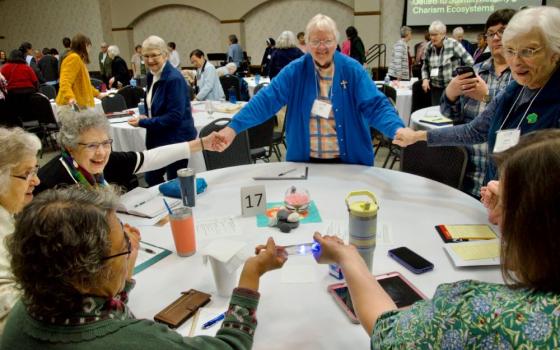The recent story about Jennifer Haselberger, a former chancellor for the St. Paul-Minneapolis archdiocese who finally blew the whistle on long unreported allegations of sexual abuse by priests, calls to mind a similar key role some years ago played by a woman in the Belleville, Ill., diocese.
In that case, a priest, Raymond Kownacki, was moved due to ecclesiastical indifference from parish to parish for more than 25 years despite a mounting host of allegations and complaints about his sexual activities with countless boys and at least one girl. During that time, three bishops of Belleville had to be personally aware of Kownacki's well-documented history. As the chancellor of the diocese testified at a later trial, "Everyone at the chancery office knew Kownacki was sick and liked to molest children."
Yet the parishes to which he was assigned were never given any warning. Bishops Albert Zuroweste, John Wurm and James Keleher sent these parishes glowing comments about Kownacki's dedicated priestly service and confidence in his ability to carry out his duties. In 1988, Kownacki was sent to a Belleville church that had a grade school next door. No restrictions of any kind were placed on his ministry or other activities.
In 1993, the Belleville diocese finally adopted a policy about clerical sexual misconduct and set up a seven-member review board (three priests and four lay members), which was given access to the diocesan records. It did not take long for Margie Mensen, the board's administrator and lone woman member, to see what had been going on. She viewed the evidence, met with parents, then firmly recommended that Kownacki be immediately removed from all ministry. The board unanimously supported her, and Kownacki was put on administrative leave, where he remains to this day. It is likely Mensen was the first woman to ever see that record of gross abuse that had been mounting for so many years.
One of the Kownacki's victims, James Wisniewski, came forward several years later and sued the Bellville diocese. In the lengthy trial that followed, the diocese was found guilty of negligence, willful and wanton conduct, fraud, deceit, civil conspiracy and fraudulent concealment. Wisniewski was awarded $5 million in compensatory and punitive damages. The diocese chose to appeal the verdict, but it was upheld by the appellate court and refused by the U.S. Supreme Court. By the time the matter was settled in 2011, the award had risen to more than $6 million.
These two cases suggest that if in the past, women had held authoritative positions in dioceses allowing them to examine charges regarding sex abuse and if more women were involved now in review boards and given access to evidence of clerical misconduct, the heinous careers of many people like Kownacki could have been interrupted at an early stage and many children spared the horror of abuse. They suggest also that clericalism is so deeply entrenched in many members of the clergy that they refuse to see the evidence of crime when it is right before their eyes.



